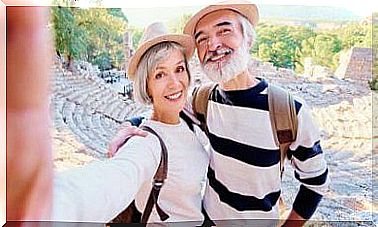Behavioral Activation In Weight Loss Processes

Behavioral activation is best known for its use in certain mood disorders such as depression. However, this type of strategy aimed at increasing the repertoire of behaviors can bring more benefits. In so-called psychonutrition, for example, behavioral activation can be a valuable tool to achieve weight loss.
Both the psychologist and the nutritionist can play an equally important role in guiding the person to improve their BMI (body mass index). While it’s true that acquiring new habits requires constant effort, behavioral activation can serve as a supportive tool.
behavioral activation
Behavioral activation uses the individual’s context and experience to study the functions of their behavior in the present moment. In the field of initiating healthy habits that configure a new lifestyle, such as the weight loss process, for example, it can help individuals to incorporate new ways of proceeding to their behavioral repertoire.
The basic structure of a behavioral activation program is based on activation. Let’s think that certain behaviors may not be motivating. However, performing these behaviors is necessary to achieve long-term results.
In other words, the performance of certain behaviors that bring a person closer to adopting the habits he needs to achieve his goal may not be preceded by sufficient motivation. However, this motivation can come later, once the behavior has been performed.
In short, behavioral activation makes people work “from the outside in”, breaking certain activities into stages to increase the likelihood that certain behaviors will be established in the individual.

How can a behavioral activation program be implemented in weight loss processes?
Keeping a record is vitally important to getting to know people’s lifestyles. In turn, it is essential to collect other important data for initiating behavioral activation.
The presence of the nutritionist is of special relevance, since the process of initiating healthy habits and maintaining a healthy weight must also be relegated to the professional with knowledge about nutrition.
Assessing the skills of the change agent is also of special interest in shaping the first steps towards behaviors that bring them closer to their goals. Once the individual’s skills and abilities are known, actions can be taken.
To do this, small steps are set to bring you closer to your goals so that changes are introduced slowly but steadily. This avoids the feeling of boredom and lack of resources that promote stagnation in activation.
Benefits of behavioral activation in weight loss processes
Earlier, we talked about breaking habits to set smaller challenges. Continuing along just that thread, the person, breaking down certain types of activities, has the opportunity to gain the reinforcement that comes from completing intermediate steps, while increasing the likelihood of establishing the habit.
Among the benefits of behavioral activation, we can highlight the following:
- It gives the person a sense of competence and ability to perform certain tasks that may be difficult at first.
- It increases the person’s motivation, once the objective to be achieved is reached.
- It teaches other more complex skills or brings out skills in the person they didn’t have at the beginning.
- It works thoughts and emotions as motivating or inhibiting elements of objective behavior, with the main focus being the performance of the behavior.
What activities can you increase or teach in a weight loss program?
We know that when a person decides to undergo a weight loss program or maintain a healthy weight, they often set unrealistic goals. For example, if a person does not usually exercise, running 20 kilometers on the day he wants to start establishing this habit as a routine will only fill his body with pain that is precisely an obstacle to repeating the activity.
In addition, setting goals that are far removed from current reality can generate a feeling of discomfort and frustration. The person may think that he cannot or does not have the capacity, when the problem is only in the plan that he decided to follow.

Carrying out desired behaviors in a short time vs. realistic goals
Behavioral activation helps to acquire healthy habits. With this, those who want change observe small changes in their routine without their goals exceeding their capacity. This can be seen with the following examples:
- A person who is ashamed to go to the gym because he doesn’t know what kind of exercise to do. She assumes that she only knows exercises to do for 20 minutes, and at the same time, those 20 minutes seem insufficient to reach her goal. With behavioral activation, you can start exercising during those 20 minutes, gradually expanding it with new exercises . It’s about doing, starting, activating what feeds or feeds back someone’s motivation.
- Someone who decides to change their eating habits but doesn’t have enough cooking skills. Behavioral activation could start with organizing the shopping cart, avoiding a portion of the ultra-processed food.
- A person who is interested in exercising outdoors but is afraid that others will laugh at her for being clumsy. In this case, behavioral activation can start with short walks.
If in these examples the intended behavior was performed directly (going to the gym for an hour, not eating ultra-processed foods and cooking, going for a run…), without intermediary and activation behaviors, it is more likely that it would be performed only once.
In short, behavioral activation not only helps you perform certain activities that were not previously done, but also establishes desired behaviors in the long run.









